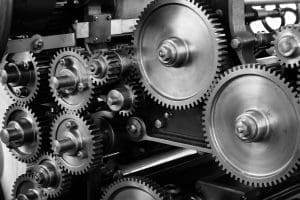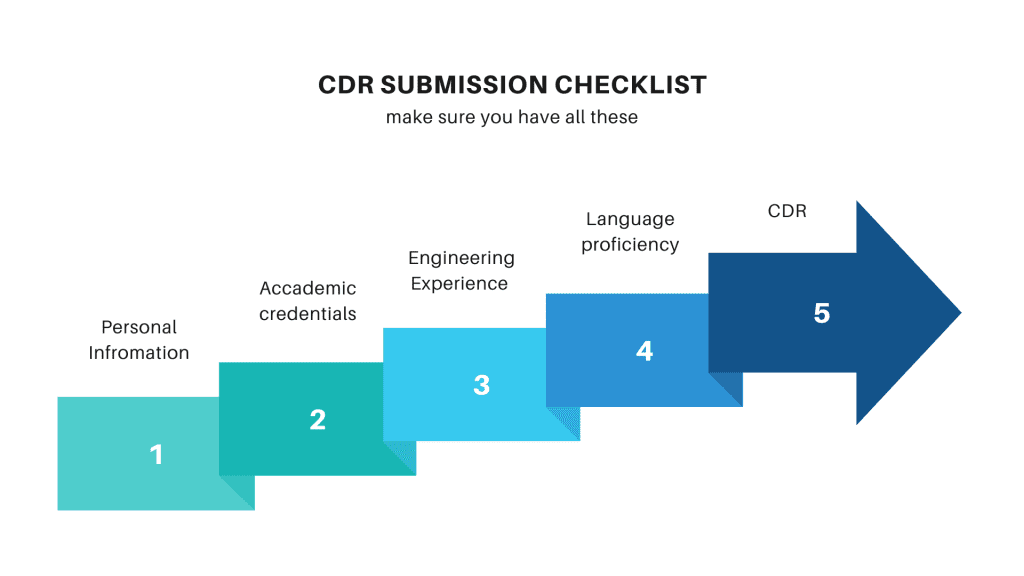Introduction
In the dynamic world of engineering, where innovation and design play pivotal roles, mechanical engineers stand at the forefront, driving progress and shaping the future. This article aims to guide aspiring mechanical engineers through the intricate process of crafting an impactful Competency Demonstration Report (CDR). A well-composed CDR Report not only showcases your expertise and accomplishments but also serves as your passport to a thriving career in countries like Australia, where engineering prowess is in high demand. Join us as we unveil the secrets to creating a compelling CDR Report that highlights your skills, projects, and aspirations, setting the stage for a successful engineering career on the global platform.
Table of Contents

Explanation of Key Requirements
Career Episode
A Career Episode is a detailed narrative that plays a critical role in a Competency Demonstration Report (CDR) by showcasing an individual’s engineering skills, projects, and experiences. Each episode should be a comprehensive document of a significant engineering task or project that the applicant was involved in. The structure of a Career Episode is as follows:
- Introduction: This section introduces the career episode, weaving in essential details such as the chronology of dates and duration, the geographical location of your experience, and the name of the organization involved. Aim for approximately 150 words to set the stage effectively.
- Background: Here, the scene is set to provide context by outlining the nature of the overall engineering project, its objectives, and a vivid description of your work area. Additionally, this part incorporates an organizational structure chart that highlights your position, accompanied by a statement of your duties, including an official duty statement if available. This section typically spans 200-500 words, allowing for a comprehensive view of the environment.
- Personal Engineering Activity: This section captures the essence of the actual work you performed, drawing a clear distinction between your role and team activities. It details how you applied your engineering knowledge and skills, the specific tasks assigned to you, and your unique approach to tackling them. The narrative delves into any technical challenges or problems encountered, along with the solutions you devised, as well as strategies and original designs you contributed. It also explores how you collaborated with team members throughout the process, requiring a depth of 600-1500 words to truly convey your experience.
- Summary: In this final section, your impressions of the engineering activity and your role in it come to life. It offers an overall view of the project, assesses its success in meeting its goals, and highlights the impact of your contributions on the project’s outcome, ideally within 50-150 words.
Understanding the CDR Summary Statement

The CDR Summary Statement requires you to analyze your Career Episodes thoroughly and identify specific instances where you have demonstrated the competencies outlined by Engineers Australia. It acts as a bridge, linking your personal experiences and achievements to the standardized competency elements. This section is not merely a summary; it’s a detailed correlation that demands precision and clarity.
The CDR Summary Statement is structured around a table format provided by Engineers Australia as seen in the figure below, which lists all the competency elements relevant to your occupational category (Professional Engineer). For each competency element, you will need to indicate the paragraph in your Career Episodes where that competency is addressed. This requires a meticulous cross-referencing effort to ensure accuracy and completeness.
Continuing Professional Development (CPD)
Continuing Professional Development (CPD) is a crucial aspect of maintaining competency as an engineer. It involves actively seeking out learning opportunities to stay current in the field and continuously improve one’s skills and knowledge. Some potential activities that mechanical engineers can engage in for their CPD include:
- Attending workshops, seminars, and conferences: These events provide opportunities to learn about the latest advancements and trends in mechanical engineering and network with industry professionals.
- Participating in short courses and online learning: Taking courses on specific topics relevant to your field of work or interest can enhance your skills and knowledge in a targeted manner.
- Reading technical journals, articles, and books: Staying up-to-date with research and developments in mechanical engineering through reading can broaden your understanding of the field.
- Involvement in professional organizations: Being an active member of a relevant professional organization can provide access to resources, networking opportunities, and potential mentorship opportunities.
Sample project topics for the CDR Report for Mechanical Engineer

Mechanical engineers are at the forefront of developing innovative solutions across a variety of industries. The versatility of their skills allows them to work on a wide range of projects that not only enhance their competency but also contribute significantly to technological progress. Here are some sample project topics that mechanical engineers can consider for their Career Episodes:
- Design and Fabrication of an Automated Guided Vehicle (AGV): This project involves designing and constructing an AGV, which is a portable robot that follows markers or wires in the floor, or uses vision or lasers. It showcases skills in robotics, automation, and machine design.
- Development of a Solar-Powered Water Purification System: This project taps into renewable energy sources to address water scarcity and contamination. It requires proficiency in thermodynamics, fluid mechanics, and renewable energy technologies.
- Thermal Analysis of a Heat Exchanger: A study involving the design, simulation, and optimization of a heat exchanger to improve its efficiency. It emphasizes knowledge in heat transfer, fluid dynamics, and thermodynamics.
- CAD/CAM Modeling and Simulation of a Jet Engine Part: This involves the use of computer-aided design and manufacturing software to create and simulate a component of a jet engine, showcasing skills in high-precision engineering and aerodynamics.
- Optimization of Manufacturing Processes through Lean Six Sigma: A project focused on improving manufacturing efficiency by applying Lean Six Sigma methodologies, highlighting abilities in process engineering and quality assurance.
- Design and Analysis of a Wind Turbine Blade: Concentrating on renewable energy, this project involves designing a wind turbine blade and analyzing its performance under different conditions. Skills in structural analysis and aerodynamics are emphasized.
These projects not only demonstrate a mechanical engineer’s technical prowess but also their commitment to addressing modern challenges through innovation and sustainable practices.
Competency Requirement for Mechanical Engineers
Apart for the general requirements for every field, there are some competencies relevant just for Mechanical Engineers, Product Engineers and Industrial Engineers. This specific competencies are set by ANZSCO and can be found at ANZSCO 233512.
A mechanical engineer is tasked with designing, organizing, and supervising the construction, operation, and maintenance of mechanical and process plant installations. They also develop programs to coordinate manufacturing activities and ensure cost-effective resource utilization.
His tasks will be as follows;
- Reviewing functional statements, organizational charts, and project details to ascertain worker functions and responsibilities, pinpoint areas of duplication
- Establishing work measurement programs, analyzing work samples to set labor utilization standards
- Analyzing workforce use, facility layout, operational data, production schedules and costs to optimize worker and equipment efficiency
- Designing mechanical equipment, machines, components, products for manufacturing, and construction plant and systems
- Developing manufacturing specifications, selecting materials, equipment, piping, material flows, capacities, and plant/system layouts
- Coordinating project labor, materials, plant, and equipment deliveries
- Setting standards and policies for installation, modification, quality control, testing, inspection, and maintenance following engineering principles and safety regulations
- Conducting plant inspections to ensure peak performance
- Supervising maintenance of plant structures and equipment, coordinating new designs, surveys, and maintenance schedules
Common Mistakes to Avoid in a CDR Report

Little mistakes and you are out of the game. About 90% of applications are vetted and the rejection of the remaining 10% is greatly the effect of mistakes and incomplete CDR Reports. While some errors are lightweighted some could be criminal and can lead to suspension. Go through meticulously and do not make any of the following errors;
- Plagiarism stands out as a critical issue; copying content from existing reports or published sources not only questions your integrity but also leads to immediate disqualification. Authenticity in presenting your work and achievements cannot be overstressed. Please Note that it is not sufficient to merely describe work in which you were involved. Career Episodes must be written in the first person singular clearly indicating your own personal role in the work described. Remember, it is what I did, not what we did or what ‘I was involved in’ and describe how you did it. If your work has this flaw, it you are immidiately rejected and in some casses, banned.
- Neglecting details in Career Episodes. These narratives are your opportunity to showcase your engineering skills and problem-solving capabilities. Being too generic or omitting specific contributions and outcomes can significantly weaken your case.
- Failing to demonstrate teamwork and leadership skills. Engineering is seldom an isolated profession but rather a collaborative effort. Illustrating your ability to work within team frameworks, lead projects, and communicate effectively is crucial.
- Neglect of Continuing Professional Development (CPD) documentation can be a critical mistake. CPD evidences your ongoing learning and commitment to staying abreast of industry advancements. Overlooking to document these activities can portray a lack of engagement with the engineering community and ongoing professional growth.
CDR Submission Process
Preparing and Organizing the Necessary Documents

Before initiating the CDR submission process, ensure that all required documents are meticulously prepared and organized. This preparation involves gathering personal and academic credentials, evidence of professional engineering experience, English language proficiency test results, and the CDR itself, including Career Episodes, and Continuing Professional Development (CPD) records.
Document Checklist Before Submission
Before finalizing and submitting your Competency Demonstration Report (CDR) to Engineers Australia, it is imperative to compile and review the following checklist of required documents to ensure full compliance with Engineers Australia guidelines;
- Recent Passport-Sized Photograph: Ensure you have a current, color passport-sized photograph.
- Primary Identification Document: Include a copy of your current passport (specifically, the page displaying your photo and name) or a national identity card.
- Academic Degree Certificates: Provide certified copies of your original bachelor’s degree or higher-level certificates.
- Official Academic Transcripts: Submit certified copies of your complete and official academic transcripts.
- Updated Resume/Curriculum Vitae: Present a detailed and current resume that outlines your education, work experience, and specific roles and responsibilities.
- English Language Proficiency Test Results: Include official documentation of your English language proficiency, with accepted test results (IELTS, TOEFL iBT, PTE Academic, etc.) in line with Engineers Australia’s requirements.
- Career Episode Reports: Prepare three Career Episodes written in English that demonstrate your application of engineering skills and knowledge in a professional context.
- Summary Statement: Submit a comprehensive Summary Statement, that maps each competency element to the relevant paragraphs of your Career Episodes.
- Continuing Professional Development (CPD) Record: Provide a list of CPD activities undertaken, supported by relevant documentary evidence where applicable.
- Professional Registration Certificate (if applicable): Include documentation proving your registration with a recognized engineering authority or licensing body in your country.
- Overseas Qualification Assessment (if applicable): For qualifications not accredited by Engineers Australia, include an official letter from Engineers Australia assessing your overseas engineering qualifications.
- Name Change Documentation (if applicable): If your name has changed since obtaining your academic or professional credentials, include legal documents such as a marriage certificate or official government documents.
- Official English Translations: Ensure certified translations are provided for all documents not originally in English.
It is crucial that each document is meticulously prepared, certified as a true copy where necessary, and clearly legible to facilitate a smooth assessment process. Keep in mind that thorough preparation and presentation of these documents significantly enhance your chances of success. Failing to adhere to these guidelines may result in delays or complications in your application, underscoring the importance of attention to detail in this process.
Submission Guidelines and Timeline
The submission of a CDR Report to Engineers Australia should be done through their designated online portal. Applicants must create an account, fill in the required details, and upload all documents in the prescribed format. It is advisable to submit your application well before the desired assessment period as the evaluation process may take up to 12 weeks, depending on the assessment workload and application accuracy.
Once the CDR Report is submitted, Engineers Australia will review the application for completeness before proceeding to the assessment stage. During this phase, the assessor examines the CDR to evaluate the applicant’s engineering knowledge, skills, and competencies against the Australian engineering competency standards. Successful applicants will receive a positive assessment outcome, which is pivotal for visa application or employment purposes in Australia.
In cases where additional information or clarification is needed, applicants may be contacted to provide further details or to rectify any issues. An unsuccessful assessment, on the other hand, will be accompanied by detailed feedback, offering the applicant an opportunity to understand the shortcomings of their submission and to consider reapplying in the future with a revised CDR Report for Mechanical Engineer.
Post-Assessment Scenarios
If you get a successful CDR assessment, it paves the way for exciting opportunities in Australia’s engineering sector. Following a positive evaluation, the next steps involve applying for the Skilled Migration Visa. Ensure you are abreast of the latest visa application procedures and requirements, as these can frequently change. Additionally, it’s advisable to connect with professional networks and engineering bodies in Australia to facilitate a smoother transition into the workforce.
If your CDR assessment does not yield the desired outcome, do not be disheartened. Applicants have the option to seek a re-evaluation or appeal against the decision. It is crucial to meticulously review the assessor’s feedback to understand the areas of deficiency. Before reapplying or initiating an appeal, consider seeking guidance from experienced professionals or CDR advisory services to address the shortcomings effectively. Remember, a negative assessment is not the end of the road but an opportunity for learning and improvement.
Conclusion
Navigating the complexities of the CDR submission process for Engineers Australia can initially seem daunting. However, with careful preparation, attention to detail, and adherence to the guidelines, engineers can significantly enhance their chances of a favorable assessment. The key lies in authenticity, comprehensive documentation, and a clear demonstration of engineering competencies.
Whether you achieve a successful assessment or face the challenge of a negative outcome, each stage is a stepping stone towards personal and professional growth. Remember, the Australian engineering sector offers vast opportunities, and a meticulously prepared CDR Report is your gateway to unlocking these possibilities. Stay committed, seek support when necessary, and keep your professional development continuous. With resilience and determination, the path to engineering success in Australia is well within reach.
Frequently Asked Questions
What level of detail should I include when describing my engineering projects?
Clearly explain the project objectives, your role, and the outcomes, Highlighting the engineering knowledge and skills you applied and Demonstrate your problem-solving approach and decision-making process
What is the significance of the Career Episodes in the CDR report?
Career Episodes are crucial components of your CDR report as they demonstrate your engineering skills and knowledge application in a professional context. Each Career Episode should detail a specific period or aspect of your engineering activity, showcasing your problem-solving capabilities, technical proficiencies, and contributions to the engineering domain.
What happens if my CDR is assessed as not suitable?
If your CDR is assessed as not suitable, Engineers Australia may provide feedback or recommendations for improvement. You might be given an opportunity to address the deficiencies and resubmit your report or advise on further professional development to meet the competency standards. It is crucial to carefully review and adhere to the feedback to enhance your chances of a successful re-assessment.




